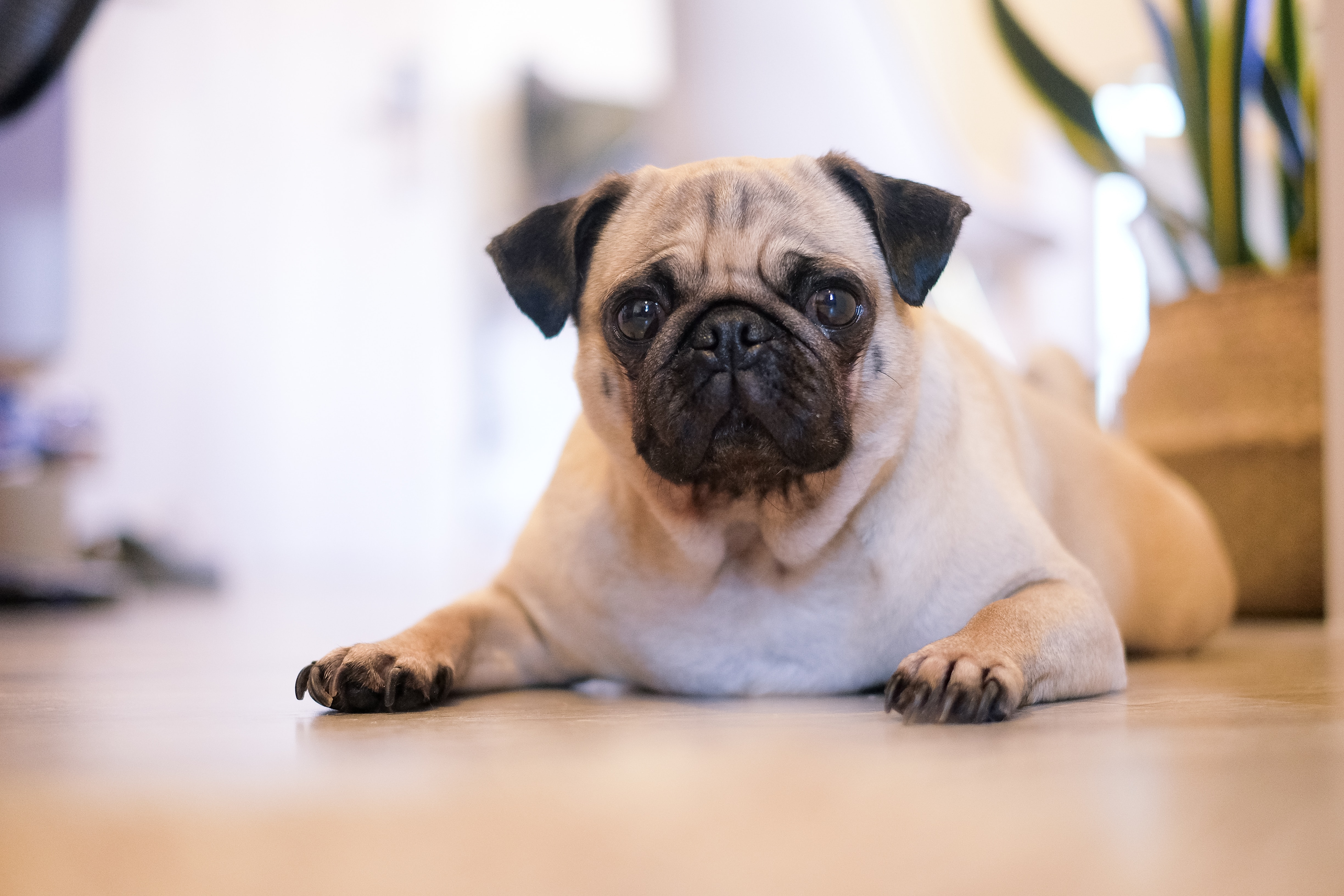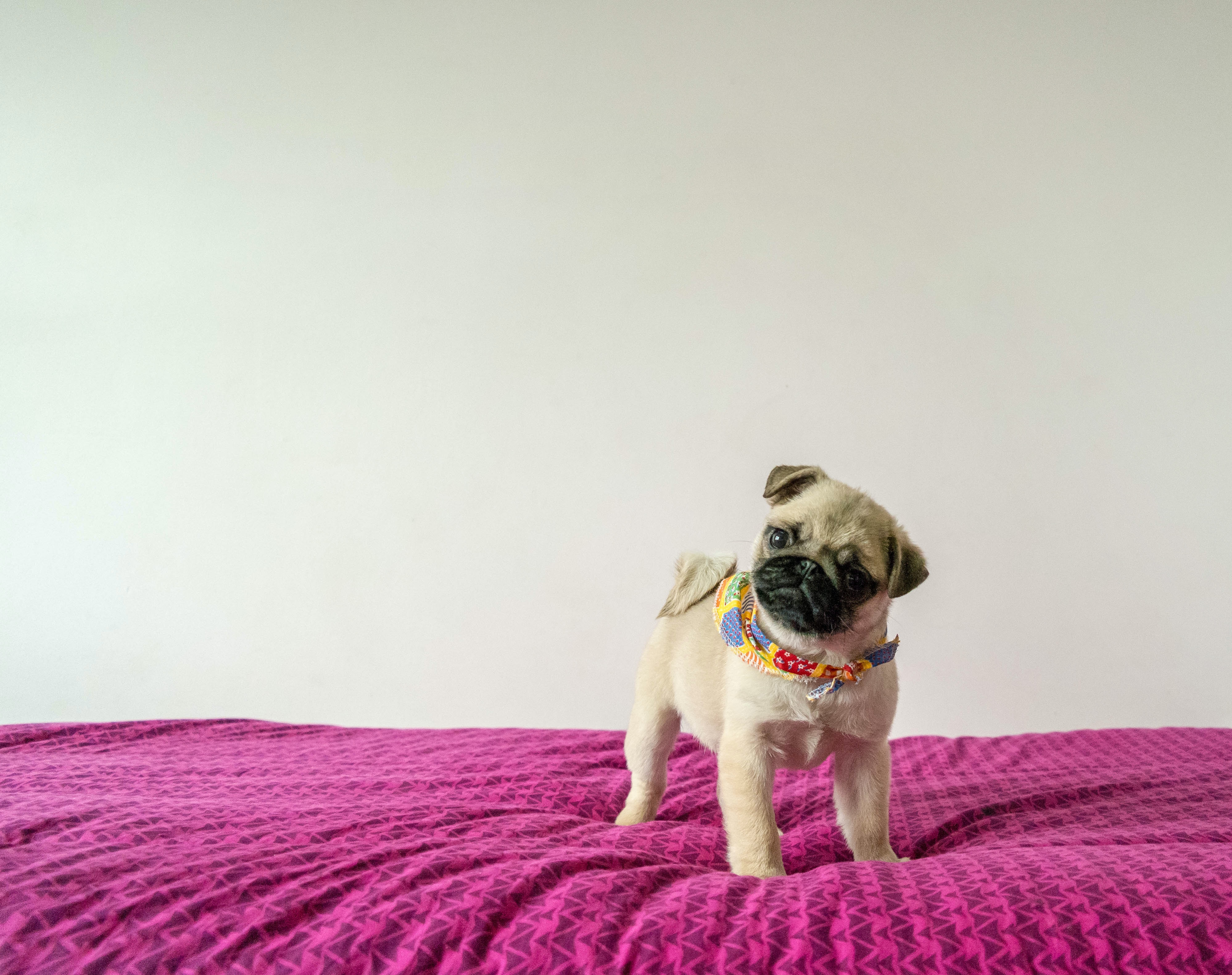
The Pug, a breed often summarized by the phrase “multum in parvo” (much in little), is a small dog with a history as rich as its personality is vibrant. With ancient origins tracing back to China, the Pug’s distinctive features include its wrinkled, expressive face, round head, and curled tail. Cloaked in a smooth, fine coat that ranges from fawn to black, this breed is celebrated for its playful disposition, unwavering loyalty, and a penchant for companionship. While they may occasionally exhibit a stubborn streak, Pugs are generally sociable and thrive in family environments.
The Pug is a member of the AKC Toy Group.
Breed Characteristics
| Dog Breed | Pug |
| Breed Popularity (AKC) | 35 |
| Country of Origin | China |
| Personality | Loyal, playful, affectionate, social, charming |
| Life Expectancy | 13-15 yrs |
| Height | 10-13 in |
| Weight | 14-18 lbs |
| Color | Fawn, Black |
| Coat | Short, smooth |
| Shedding | Regularly |
| Grooming | Weekly Brushing |
| Health Problems | Eye problems, respiratory issues, obesity |
| Trainability | Agreeable |
| Exercise Needs | Regular Exercise |
https://www.youtube.com/watch?v=8Kkrmubsgf8
Pug History
With ancient origins in China, the Pug was a favored pet of Tibetan monks before it became popular in Chinese imperial courts. By the 16th century, Dutch traders brought the breed to Europe, where it quickly became a favorite among royalty, notably the House of Orange in the Netherlands. Recognized for its wrinkled face and curled tail, the Pug is often described as ‘multum in parvo’ (a lot in a little) due to its dynamic personality in a small package.
Temperament
Pugs are charming and adaptable dogs. Their behavior is playful and affectionate, making them excellent companions. They have a moderate energy level and enjoy leisurely walks and play sessions. Their intelligence and eagerness to please make them trainable, though they can occasionally display a stubborn streak. They are notably good with children and other pets. Barking is generally low unless they seek attention or play. Their affectionate and often comedic nature ensures they’re a favorite in many households.
Remember, while breed traits provide a general idea, individual dogs can have personalities that differ from the breed standard. Always spend time getting to know the dog and ensure their needs and temperament align with your lifestyle.
Grooming Requirements
Pugs are known for their short, sleek coat and unique wrinkled face. Weekly brushing helps remove loose fur and manage shedding. Bathing should be done as needed, using a suitable dog shampoo. Special attention should be given to cleaning the folds on their face, and routine grooming practices like nail trimming are essential.
Pug Health
Pugs, with a typical lifespan of 12-15 years, face issues related to their brachycephalic facial structure, leading to respiratory problems. They can also be prone to obesity, hip dysplasia, and certain hereditary eye conditions. Keeping them updated with vaccinations, a monitored diet, and routine vet visits are essential.
Exercise Needs
Pugs have a moderate energy level, but they still enjoy regular short walks and play sessions. Bonding through indoor games or short strolls is essential for their well-being. While they might enjoy a trip to the dog park, care should be taken in extreme temperatures due to their brachycephalic nature.
Training
Pugs, charming and playful, respond positively to gentle obedience training. Using structured commands, potty training can be a breeze, and crate training provides them a comforting abode. Their desire to be the center of attention means behavior problems can arise, which should be addressed early. Socialization ensures they remain amiable and get along well with kids and other pets.
Pug Pictures



Related Dog Breeds
More Dog Resources
Are you thinking about getting a puppy? Make sure to check out our list of important questions to ask before you adopt a puppy.
We also have many resources to help, from naming your puppy to socialization resources and training tips.
Take me back to the Ultimate Guide to Dog Breeds



